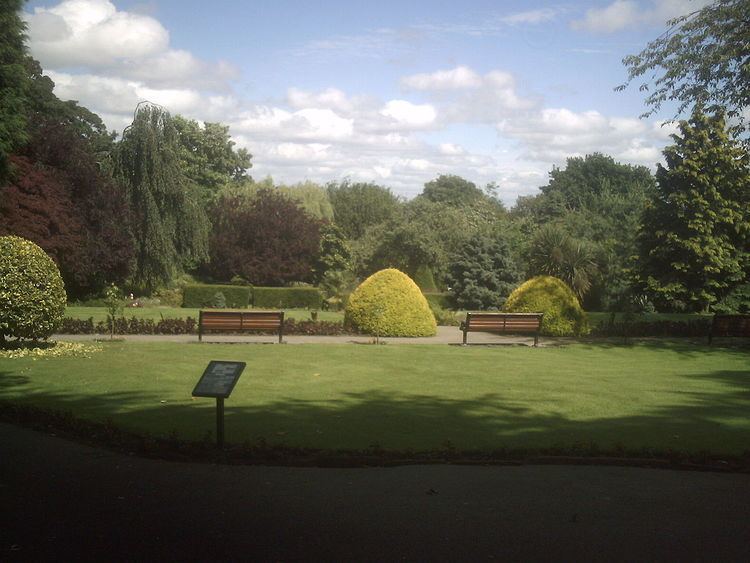Type Public Area 30 hectares Operated by Liverpool City Council Operator Liverpool City Council | Location Woolton, Liverpool Created 1920 Status Open year-round | |
 | ||
Similar Reynolds Park, Allerton Tower Park, Woolton Hall, Belle Vale Park, Wavertree Playground | ||
Woolton Woods and Camp Hill is a wooded park in the Woolton suburb of Liverpool in England. It is adjacent to St Julie's Catholic High School and Woolton High Street. Woolton Woods formed part of the estate of Woolton Hall, but was acquired by the city of Liverpool in the 1920s.
From 150 BC an Iron Age fort occupied the crest of Camp Hill. The name of Woolton (recorded in the Domesday Book as Uluentune) is derived from 'Wulfa's Tun', from the Anglo-Saxon personal name Wulfa and the Old English tun meaning village, farm or homestead. Woolton Woods formed part of the estate of Woolton Hall, which from 1772 was owned by the Ashton family, well known prominent Liverpool citizens. In the 1850s ownership of the estate passed to William Shand, who married one of the daughters of Henry Ashton. By 1871 the Gaskell family, whose family tree can be traced back to the 16th century, was resident at Woolton Hall.
The site was acquired by the City of Liverpool in the 1920s, and several interesting garden features have been created and acquired since. The Floral Cuckoo Clock in the Old Walled Garden was presented to the public in 1927 by the family of James Bellhouse Gaskell in memory of his long connection with Woolton Wood. The Dutch Garden of Meditation was created in 1928, and although the pool and garden ornaments have long disappeared, it is still a sheltered and tranquil spot, known as the Sunken Garden.
